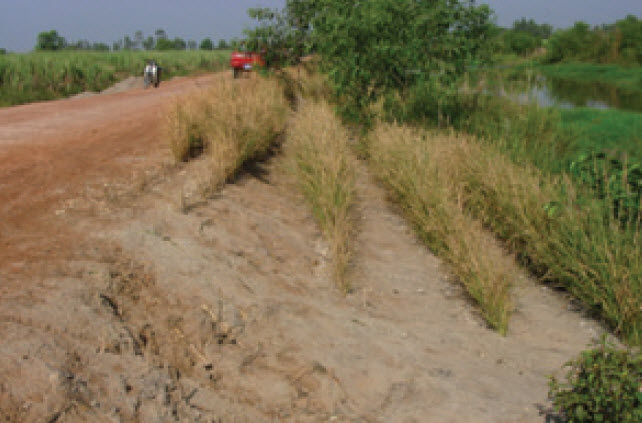I’ve recently worked on a slope stabilization preliminary project.
Among other action, the use of Vetiver grass for stabilization purposes has been suggested by the customer, who had used it successfully in another wind farm in the same area.
Although this technique is used in Italy and other European country I was not an expert, so I’ve done a search to see the peculiarities of this solution and I want to share the key points I’ve discovered.
Basically, Vetiver is the colloquial name of a plant originating from India and South East Asia.
There are 3 species:
- Chrysopogon zizanioides (formerly known as Vetiveria zizanoides), from southern India: this is the one that you’re going to use – deep roots, sterile and not invasive.
- Chrysopogon nemoralis, from Laos and Vietnam: shorter roots and not sterile.
- Chrysopogon nigritana, from South and West Africa: not sterile.
Vetiver can be used both on cut and fill slopes, up to a 1:1 gradient (45 degrees).
The number of plant that you will need will vary – the horizontal distance between plants should be from 10 to 15 cm, while the distance between rows (measured on the slope) will vary from 1 m. (highly erodible soil) to 2 m. (more stable soil).
First and last rows should be planted at the top and toe of the slope.
As cuts and embankments are not fertile (or at least, they shouldn’t be) fertilizer and watering at regular intervals will be needed. Later on regular cutting will be needed.
It growths very fast (up to 3,5 meters in 12 months).
This solution has several advantages:
- Above all, it’s cheap. This is particularly true in countries where labor wages are low. Also, there are no heavy long term maintenance costs.
- It’s a natural erosion control measure (at least, more natural than a plastic geotextile and less ugly than a rip rap).
- It’s very effective.
There are also some potential problems:
- Intolerance to shading (but this can be an advantage if you use it only as a pioneer plant for initial stabilization).
- Roots don’t penetrate well below water table.
- Need an initial establishment period of 3 to 6 month depending on the climate. During this phase it must be protected from livestock.
You can read more on the subject on this interesting book from the Vetiver System network.

Leave a Reply